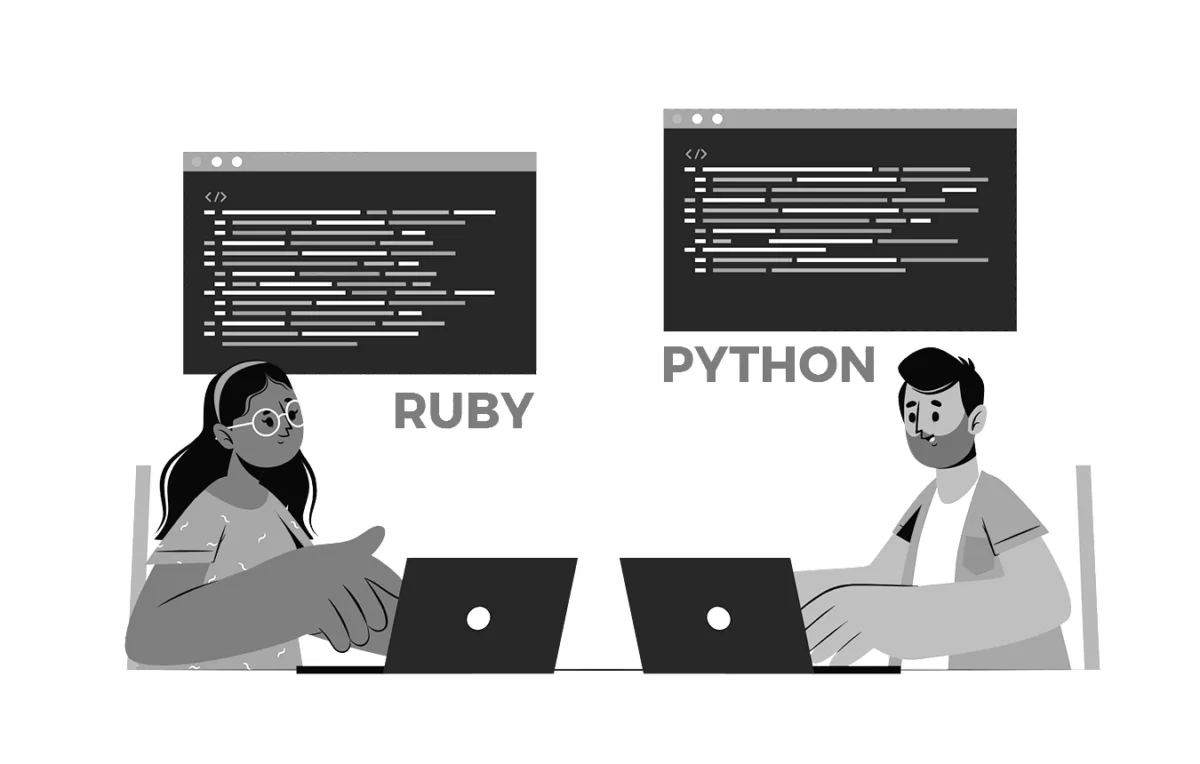As a programmer, I have a natural aptitude for programming languages, but I still remember when I first started to learn a server-side language like Python or Ruby. It can be a daunting task, but with the right approach, it can also be a rewarding one. In this essay, I will share my experience and tips on how to learn a server-side language.
Table of Contents

Choosing the Right Language
The first step in learning a server-side language is choosing the right one. Python and Ruby are both popular choices, but they have different strengths and weaknesses. Python is known for its readability and ease of use, making it a good choice for beginners. Ruby, on the other hand, is known for its elegant syntax and its focus on developer happiness. Ultimately, the choice depends on personal preference and the specific project requirements.
Setting Up the Environment
Once you have chosen a language, the next step is to set up the development environment. This involves installing the language interpreter, any necessary libraries and frameworks, and a code editor. The official documentation is usually the best place to start, as it will provide detailed instructions for your specific operating system.
Getting Familiar with the Syntax
The syntax of a new language can be intimidating at first, but it is essential to get comfortable with it. The best way to do this is by writing code. Start with simple exercises like printing “Hello, World!” to the console or solving small math problems. As you progress, start working on more complex problems and building simple applications.
Learning the Basics
In addition to syntax, it is essential to understand the basics of the language, such as data types, variables, loops, and conditional statements. Most server-side languages are similar in these aspects, so once you learn the basics, you can apply them to other languages as well.
Learning a Framework
Frameworks are essential tools for building server-side applications. They provide a set of pre-built components and tools that make it easier to develop web applications. For Python, popular frameworks include Django, Flask, and Pyramid. For Ruby, the most popular framework is Ruby on Rails.
Learning a framework can be overwhelming, as they often have a steep learning curve. However, they are well-documented and have active communities, so there are plenty of resources available. Start with the official documentation, then work on tutorials, and practice building small applications. It is important to understand the architecture of the framework and how it handles requests and responses.
Working on Projects
The best way to solidify your knowledge of a server-side language is by working on projects. This will not only help you understand the language but also give you real-world experience in developing applications. Start with small projects, such as a personal blog or a to-do list application, and work your way up to more complex applications.
Collaborating with Others
Collaborating with others is an essential part of the development process. It can be intimidating to work with others, especially if you are new to a language, but it is an excellent opportunity to learn from more experienced developers. Join online communities, such as forums or Slack groups, and participate in code reviews and pair programming sessions. It is also essential to learn about version control, as it allows for easy collaboration and tracking changes in code.
Continuing Education
Technology is constantly evolving, so it is essential to continue learning and staying up to date with the latest developments. Attend conferences, participate in online courses, and read articles and books about the language and its ecosystem. Keep practicing and experimenting with new technologies and frameworks, and don’t be afraid to ask for help when you get stuck.
Dive Deeper into the Server-Side Language:
Once you have a good understanding of the basics, it’s time to dive deeper into the server-side language of your choice. This will involve learning about more advanced topics such as object-oriented programming, design patterns, and web application frameworks. There are many great resources available for learning more advanced topics in programming, including books, online courses, and forums. You can also consider finding a mentor or joining a community of developers who are experienced in your chosen language.
Build Small Projects:
One of the best ways to solidify your understanding of a server-side language is to build small projects. This will help you put your knowledge into practice and give you experience with real-world programming problems. Start with simple projects and gradually work your way up to more complex ones.
Contribute to Open-Source Projects:
Contributing to open-source projects is a great way to improve your skills as a server-side developer. You’ll get experience working with other developers, and you’ll also learn from the code reviews and feedback that you receive. You can find open-source projects on sites like GitHub or GitLab.
Stay Up-to-Date with Industry Trends:
The world of server-side development is constantly changing. New frameworks, libraries, and tools are released all the time. To stay current, make sure to read blogs, attend conferences, and follow other developers on social media. This will help you stay informed about the latest trends and technologies in server-side development.
Conclusion
Learning a server-side language like Python or Ruby can be a challenging but rewarding experience. It requires patience, perseverance, and a willingness to learning and improving. By following these tips and taking a deliberate approach to learning, you can master a server-side language and develop the skills necessary to build complex web applications.
Remember to choose the right language for your project, set up the development environment, get familiar with the syntax, learn the basics, and master a framework. Work on small projects and collaborate with others to solidify your knowledge and improve your skills. Lastly, continue your education and stay up-to-date with the latest developments in the field.
Learning a server-side language like Python or Ruby can be challenging, but it can also be an exciting journey. Embrace the challenge, stay motivated, and have fun while learning. With time and effort, you will be able to master the language and develop amazing web applications.
FAQs:
What is the first step in learning a server-side language?
Choosing the right language.
What is the best way to get familiar with the syntax of a new language?
By writing code and starting with simple exercises.
How can you stay up-to-date with industry trends in server-side development?
By reading blogs, attending conferences, and following other developers on social media.







